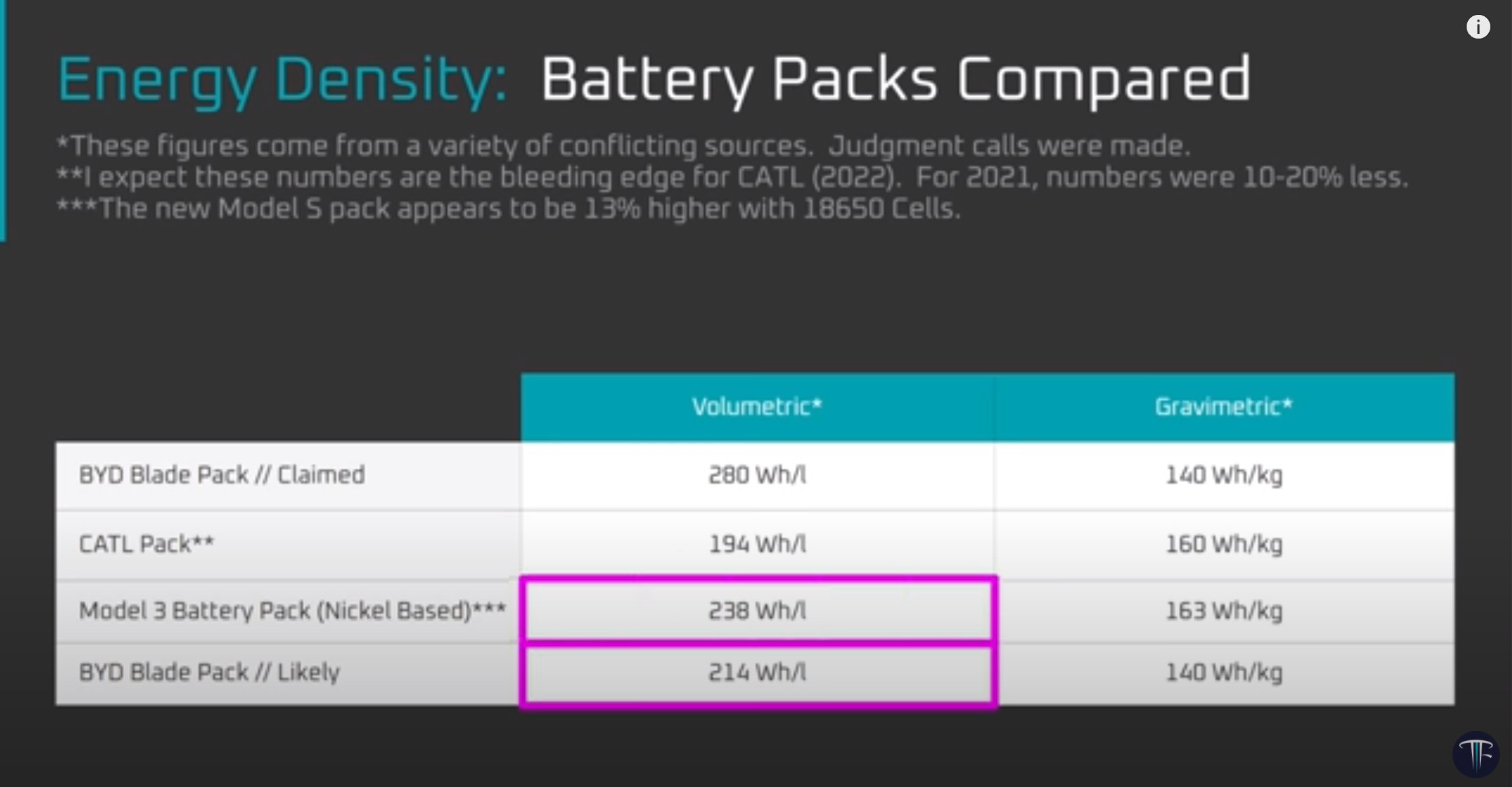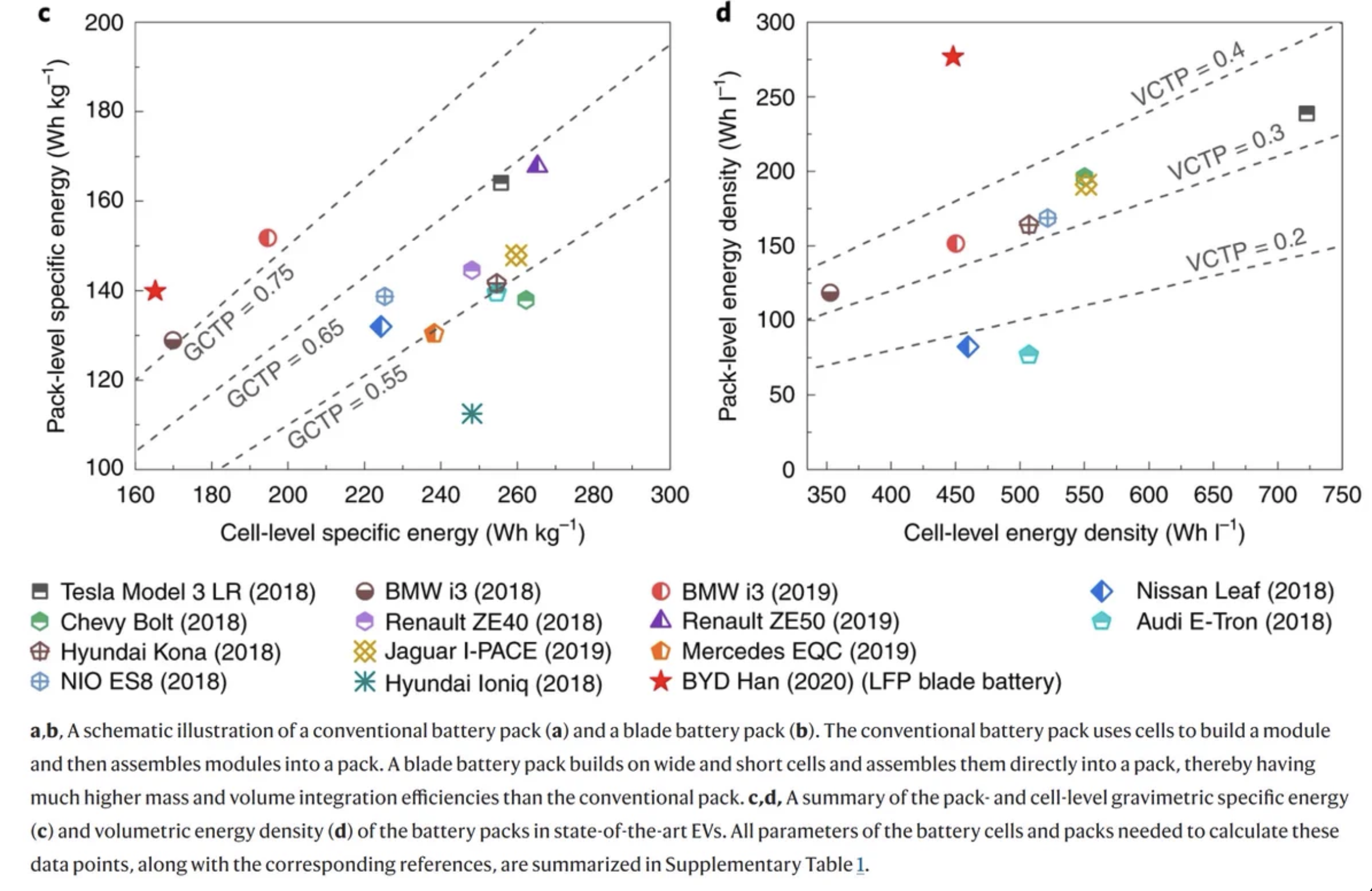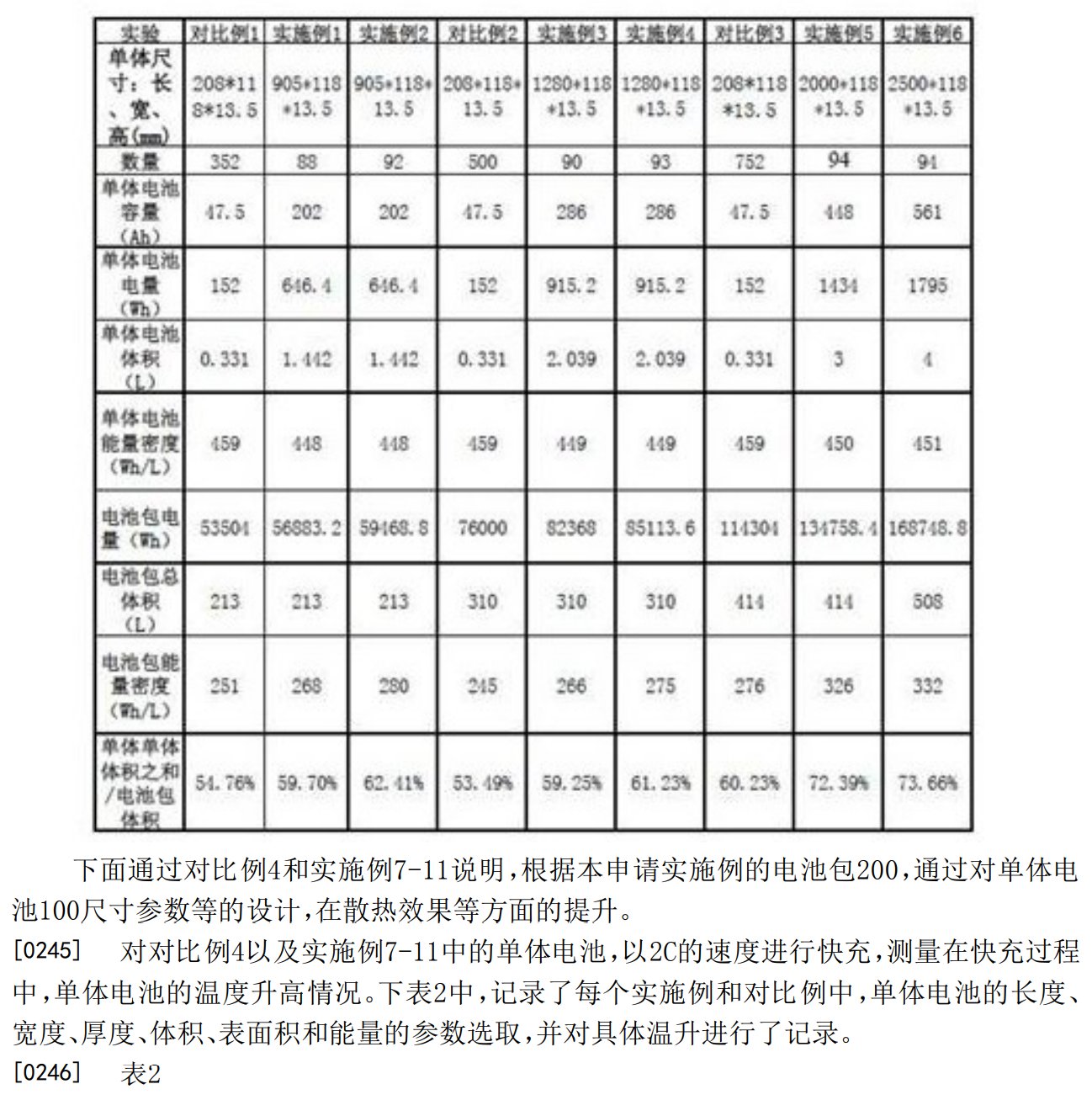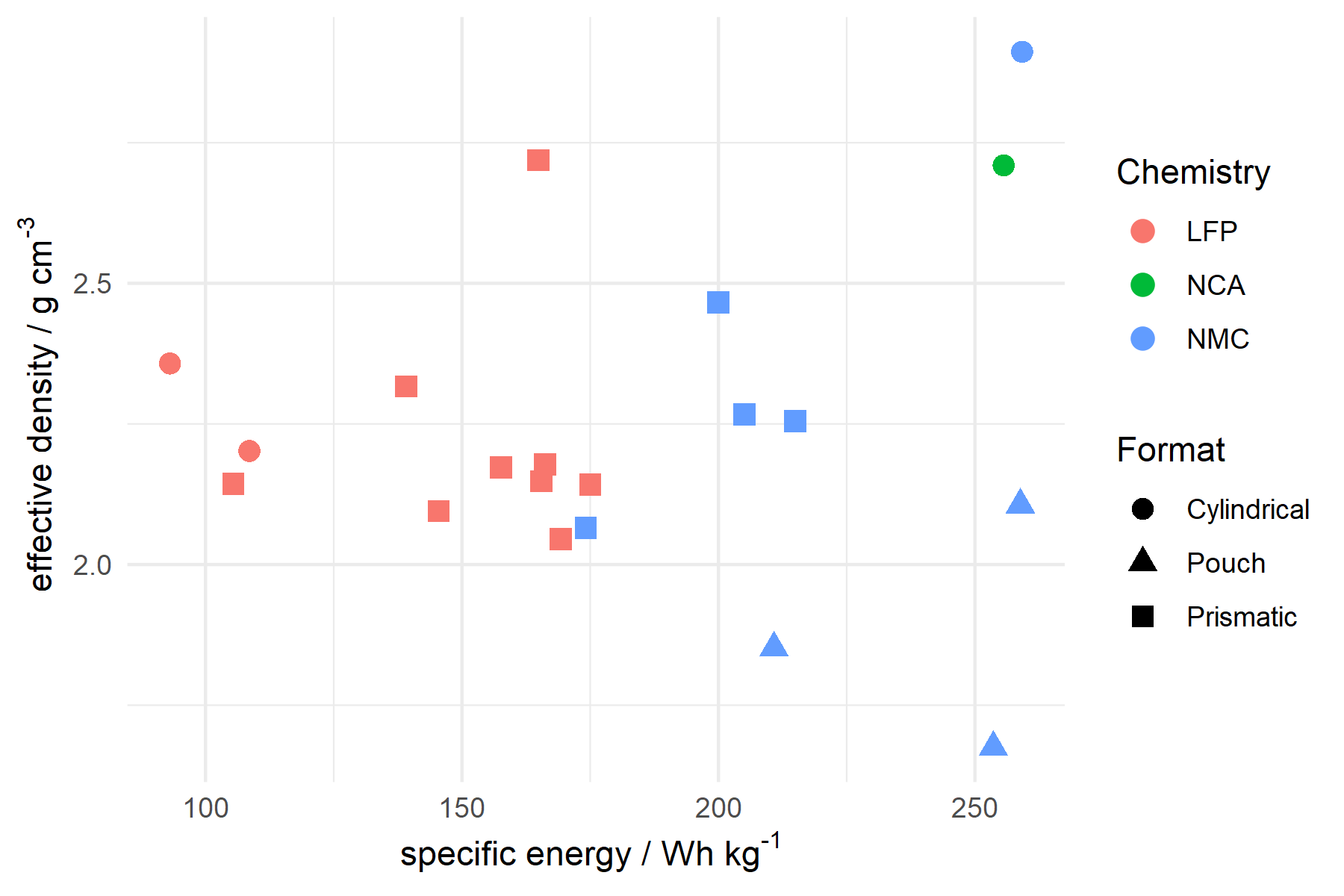Estimating the energy density of BYD Blade battery cells
There’s an interesting discussion in this nice new video from @LimitingThe on an apparent gap between BYD’s reported Wh/L for the Blade pack and what it likely is. There’s probably some lessons here about not trusting everything you find on the internet…

First, an admission… I have seen some measurement data which I’m not at liberty to disclose, but I’ve had a number of conversations in which the Blade energy density has come up, resulting in surprise when I mention it has very likely been overstated online. As @LimitingThe points out, in the absence of hard evidence we are just speculating. But we can take a closer look at the numbers in context and see if they make sense in the grand scheme of things.
This paper (featured in the video) is one of the few sources I am aware of for BYD Blade specs and comparison to others, so let’s start here - we have this fairly-widely-shared fig indicating ~450 Wh/L cell level and ~280 Wh/L pack level.

The paper refs this article from PushEVs and a Chinese patent, within which we find a table of data. I can’t read Chinese so don’t know if this is calculated or measured, but the reported data is the 3rd example from the left, so let’s go with that.

This indicates a 202 Ah cell, 448 Wh/L, in a pack with 62.4% volumetric cell to pack ratio - sounds very plausible. How does this compare with other currently available cells? I quickly collected some specs of a variety of recent cells of different types to compare. Now, one number I find interesting amongst all these is the effective density (weight to volume ratio). If I plot this vs specific energy (Wh/kg), I get the plot below. Multiply Wh/kg by density and you get Wh/L.

Essentially all prismatic cells are in the range 2-2.4 g/cm³, pouch cells tend to be a bit lower. There are a couple outliers: high-nickel cylindrical cells, which are really optimised for energy and volume, and one more… guess which…
Yep, the Blade cell, on the basis of the patent data, is around 2.7 g/cm³, compared to 2.15 g/cm³ for all other LFP cells (50-300 Ah, with similar Wh/kg). Yes, it’s a very different cell geometry, but I think it would be weird for a long, thin cell to be so much denser than a ‘blockier’ cell with essentially the same chemistry - and for it to be more similar to the energy-optimised cylindrical cells with the denser active materials. It’s also implausible b/c the density of the can, electrodes, other materials are already ~≤2.7 g/cm³…
But let’s just say that 165 Wh/kg is reasonable (that sits in the same range as the other comparable cells) and the density is more likely ~2.15 g/cm³. This gives a cell level energy density of 355 Wh/L. And if we say CTP ratio is 62.4% as reported -> 221 Wh/L on pack level.
This is fairly close to what @LimitingThe put as ‘likely’ in the video, and (you’ll have to take my word for it) close to measurement data I have seen. And that would be a full 20% less than what has been widely shared online, and in academic journals…
I think this is interesting because, at least from my perspective, the Nature Energy paper and PushEVs article(s) have been a fairly significant part of the renewed optimism about LFP and many predictions that NMC is headed for obscurity.
Don’t get me wrong, 220 Wh/L pack level for LFP is still impressive, and since LFP does not require limitations to DoD in the way that high Ni cells to, it’s on par with the state-of-the-art NMC/NCA packs today and obviously competitive against those - especially if you factor in cost, safety…
I’m also not saying that BYD have wrong information in their patent, but I don’t see any compelling reason to take information from a patent and treat it as a product spec sheet without further scrutiny.
Maybe future products will be closer to these numbers, who knows… in any case we should always be skeptical about unverifiable numbers - and there’s a lot of such information out there - and consider if they make sense!
comments powered by Disqus